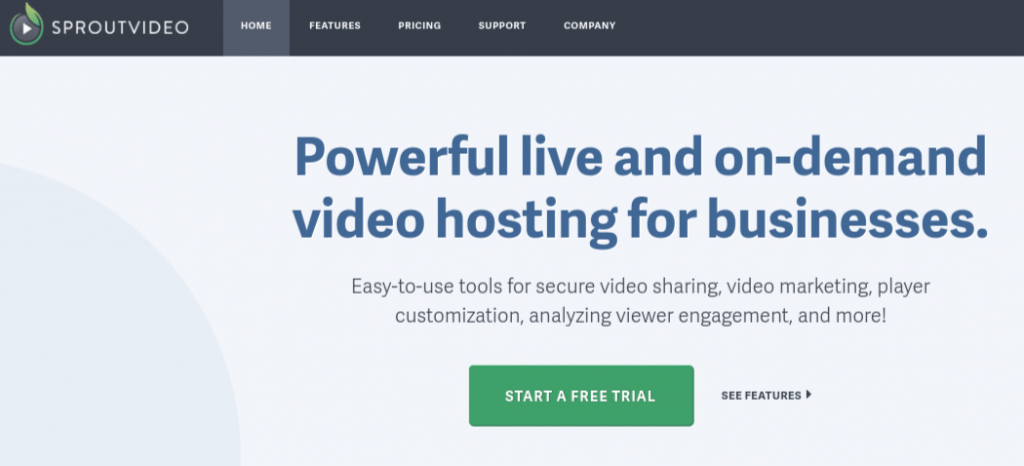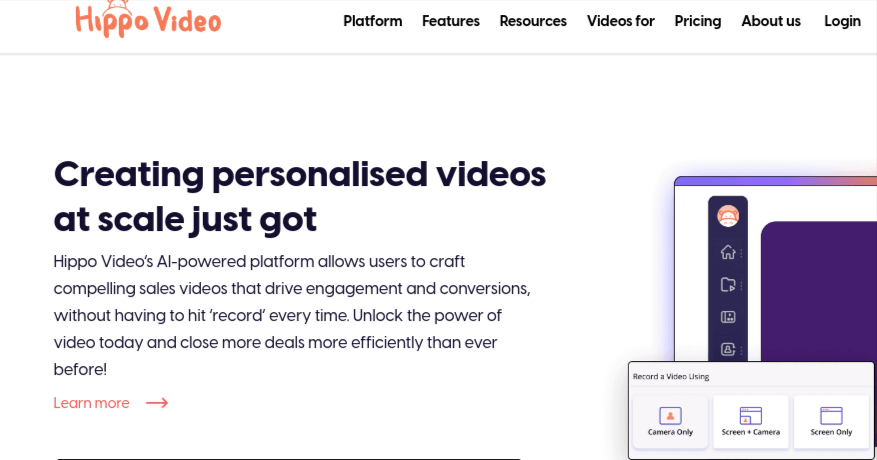Blog Vs. Vlog Hosting: 20 Differences and 20 Examples

Dive into the digital universe where words duel with videos, and the battlefields are blogs and vlogs. Welcome to our blog vs vlog hosting guide, an enlightening journey demystifying these two popular mediums of online storytelling and their hosting dynamics in an ever-evolving internet landscape.
Table of Contents
The Differences Between Blog and Vlog Hosting
Blog Vs vlog hosting services each have their unique characteristics and requirements. Let’s dive into understanding the crucial differences between the two.
Content Creation and Consumption
Content-Type: Blogs are all about written content – words on a page. Vlogs, on the other hand, are like TV shows you host yourself, featuring video content.
Creation Process: With blogs, you need to enjoy writing, proofreading, and layout design. For vlogs, you need to be comfortable filming yourself and editing videos, perhaps even writing scripts.
Time to Consume: Blogs can be read at your own pace, skimmed, or deep-dived into. In contrast, vlogs usually need a set amount of time to watch start-to-finish.
Technical Aspects
Platform Needs: For blogs, you need platforms designed for text and maybe a few pictures or small videos. However, vlogs require more robust platforms that can handle big video files.
Internet Speed: Blogs are great for slow internet connections, but vlogs need high-speed internet to avoid that buffering circle of doom.
Equipment: For blogging, a device with a keyboard is your main tool. But vlogging is a different game altogether – you’ll need a good camera, microphone, lighting, and editing software.
Storage: Blogs are light on storage since it’s mostly text. However, vlogs, with all those hefty video files, require much more.
Bandwidth: Blog hosting doesn’t eat up much bandwidth. Vlog hosting? That’s a different story due to those large video files.
Interaction, Monetizing, and Other Considerations
Engagement: Blogs engage readers through well-crafted sentences and beautiful images, allowing for detailed storytelling. But vlogs? They create an audio-visual experience that makes viewers feel like they’re in the room with you.
SEO: With blogs, you need to sprinkle keywords in your text for search engines to find you. However, with vlogs, it’s all about video tags, descriptions, and captions.
Content Shelf-Life: Blog content tends to stay relevant longer for your brand – we call it “evergreen.” Vlogs, on the other hand, often ride the wave of trends.
Learning Curve: Writing a blog is relatively straightforward. Creating a high-quality vlog? That’s a bit more of a learning process, with filming and editing skills to master.
Cost: Blogging is typically cheaper to start, mostly needing money for hosting and a domain name. Vlogging can require a bigger wallet for all that tech gear.
Making Money: Blogs often make money from ads, partnerships, and sponsored posts. Vlogs also use ads but can get a boost from video platform programs, like YouTube’s partner program.
Sharing: Text-based blogs are easy to quote and link back to. Vlogs are less quote-friendly but offer a more immersive experience to share with friends.
Interaction: Blogs let readers leave comments, while vlogs take it up a notch with comments, likes, and dislikes all visible in real-time.
Cross-Platform: Blogs are easy to access on any device. Some vlogging platforms, however, aren’t as friendly on certain devices.
Analytics: Blogs use text-focused analytics, while vlogs measure success by video views, how long people watch, and viewer engagement.
Privacy: With a blog, you can keep your identity under wraps if you prefer. Vlogging usually means showing your face or at least your voice.
Updates: Blogs can be quietly and easily updated. But updating vlogs can mean re-recording or editing whole sections – quite a bit more work.
20 Examples of Blog and Vlog Hosting Services
Are you searching for blog Vs vlog hosting solutions? Here are 20 examples of hosting services available online, offering either blog or vlog hosting.
1. SproutVideo (Vlog)

SproutVideo is perfect for hosting vlogs, offering a variety of tools from customization to analytics. Whether for a personal project or a corporate campaign, your videos are bound to shine here.
2. Bluehost (Blog)
Bluehost is a trusted name for blog hosting with robust uptime and budget-friendly plans. Plus, setting up a WordPress blog is a breeze with their one-click installation.
3. Hubspot (Vlog)
Known for its comprehensive marketing platform, HubSpot also excels in video hosting. And they offer a standout feature. That’s integrating video analytics with customer management, deepening your understanding of viewer behavior.
4. Namecheap (Blog)
Namecheap lives up to its name, offering affordable domains and blog hosting plans. Plus, it’s an excellent option for beginners looking to stretch their budget.
5. Hippo Video (Vlog)

Hippo Video is a one-stop shop for vlog hosting, creation, and editing tools. And with Hippo, your vlogs aren’t just hosted; they can stand out from the crowd.
6. Ionos (Blog)
Ionos is a robust platform for blog hosting with a range of scalable plans. Their 24/7 customer support ensures you’re never left in the lurch, making blogging a smooth experience.
7. Vimeo (Vlog)
Vimeo is a creator’s dream for vlog hosting, offering high-quality streaming and advanced privacy settings. Furthermore, its supportive community and professional-looking interface can help elevate your vlog to new heights.
8. Hostinger (Blog)
Hostinger shines in blog hosting, offering unbeatable prices without skimping on performance. Plus, its user-friendly control panel and responsive customer service make it a solid choice for bloggers at all stages.
9. Wistia (Vlog)

Aimed at marketers, Wistia is a vlog-hosting star with keen analytics. In addition, its interactive tools help to engage viewers and keep them coming back for more.
10. 123 Reg (Blog)
123 Reg is a blog host offering wallet-friendly plans and a user-friendly interface. Thus, it is perfect for beginners. And they provide resources and support to get you blogging in no time.
11. YouTube (Vlog)
YouTube, the vlogging titan, lets creators upload, share, and even earn from their videos. The broad audience and comprehensive analytics make it a go-to for vloggers worldwide.
12. GoDaddy (Blog)
GoDaddy, a household name in hosting, offers a spectrum of solutions for bloggers. Known for their stellar support, managing your blog becomes a breeze with GoDaddy.
13. Dailymotion (Vlog)
Dailymotion is a video-sharing platform that is perfect for vloggers wanting global reach. Its user-friendly upload and share features make vlogging simple and enjoyable.
14. Fasthosts (Blog)
Fasthosts provides reliable, speedy blog hosting solutions. With a range of scalable plans, they cater to both budding bloggers and those with an established audience.
15. Brightcove (Vlog)

For a sleek and professional vlog hosting experience, look no further than Brightcove. Their tools not only enhance video quality but also provide comprehensive analytics, perfect for fine-tuning your content strategy.
16. HostPapa (Blog)
HostPapa is a blog host that focuses on simplicity and sustainability. Plus, it has a user-friendly interface and a commitment to green web hosting. So HostPapa ensures that your blogging journey is as smooth as it is environmentally friendly.
17. Facebook (Vlog)
Facebook has expanded beyond social networking to become a popular vlog hosting platform. In addition, it’s the perfect place to share your videos, reach a large audience, and interact with viewers in real time.
18. Web.com (Blog)
Web.com provides an all-in-one platform for blog hosting, offering a range of tools to build and manage your blog. Furthermore, with their various plans, you can choose what best suits your needs, whether you’re a hobbyist or a pro blogger.
19. Spotlightr (Vlog)
Spotlightr, formerly known as vooPlayer, offers a unique, customizable platform for vlog hosting. Plus, it provides advanced video hosting features. And it also focuses on enhancing viewer experience and engagement.
20. Hostgator (Blog)
HostGator is a well-known name in the blog hosting world, offering affordable plans without compromising on speed or reliability. Plus, their award-winning support team is always on standby to assist you.
Wrapping Up: Blog Vs. Vlog Hosting
Understanding the distinctions between blog vs. vlog hosting empowers you to choose the right platform for your content. Are you ready to explore hosting options? Then visit Copahost today and embark on your digital journey with confidence.
FAQ
How to start a blog?
Starting a blog involves several steps. Here’s a general guide to help you get started:
- Choose a Blogging Platform: There are many blogging platforms available. Research and choose the one that best suits your needs in terms of customization, features, and ease of use.
- Select a Domain Name: Your domain name is the web address of your blog (e.g., www.yourblog.com). Choose a name that is relevant to your blog’s topic and easy to remember. You can register a domain name through domain registrars like GoDaddy or Namecheap.
- Set Up Web Hosting: To make your blog accessible on the internet, you’ll need web hosting. Choose a reliable hosting provider that offers good performance and customer support. Bluehost, SiteGround, and HostGator are popular hosting providers.
- Install and Customize Your Blogging Platform: Once you have your domain and hosting, install the chosen blogging platform on your hosting account. Follow the platform’s instructions to set up and customize your blog’s appearance and functionality. Choose a theme/template that aligns with your blog’s style and purpose.
- Create Compelling Content: Start creating content for your blog. Plan your topics, do research, and write engaging articles or posts that provide value to your target audience. Use a consistent tone and style to maintain a cohesive brand image.
- Promote Your Blog: Share your blog posts on social media platforms, participate in relevant online communities, and optimize your content for search engines (SEO) to increase visibility. Engage with your readers and encourage them to share your content.
- Monitor and Analyze: Use analytics tools like Google Analytics to track your blog’s performance. Monitor traffic, engagement, and conversion metrics to understand your audience and improve your content strategy.
Remember, starting a successful blog takes time and effort. Consistency, quality content, and building a community around your blog are key factors in growing your audience and achieving your blogging goals.